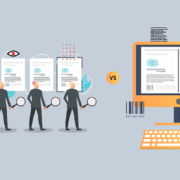What is a Quality Management System?
Date: August, 2018 | Category: Quality | Author: Marvin Magasura
What is a Quality Management System?
A quality management system (QMS) is a term that refers to a system in charge of documenting all processes, responsibilities, and procedures for achieving quality objectives and policies. A QMS allows companies to direct and coordinate their operations to meet both regulatory and customer requirements while also improving their efficiency and effectiveness on a regular basis.
ISO 9001:2015 is the international standard that specifies all the requirements needed to implement a quality management system. In fact, most people use the term QMS as a synonym for the ISO 9001 family even though the latter is only a document that describes the former.
The Importance of a Quality Management System
Why is it so important to implement a quality management system into your quality processes? Quality management systems actually serve plenty of purposes, including:
- Engaging staff
- Lowering costs
- Reducing wasted materials
- Setting company-wide direction
- Identifying and facilitating training opportunities
- Improving processes
Benefits of Quality Management Systems
What are the advantages of using a Quality Management System?
Once implemented, quality management systems have the power to affect all aspects of your company’s performance. However, the design and implementation of a QMS will bring you two overarching benefits:
- Meeting the organization’s requirements ensures that your company complies with industry regulations and provisions of services and products in the most cost-effective way. In the end, this will create room for growth, expansion, and profit.
- Meeting customers’ needs will help to build trust in your company, in turn engaging even more customers, sales, and profits.
Other advantages include preventing errors, reducing costs, helping to communicate a willingness to produce consistent results, improving your company’s offerings, and ensuring all processes are completely controlled and defined.
Quality Management Standards
As we previously mentioned, the ISO 9001:2015 standard describes all the requirements that a company must meet to implement its own quality management system. By far ISO 9001:2015 is the most implemented and recognized QMS standard on the planet that counts for complete international acceptance.
However, there are plenty of other QMS standards available, such as the ISO 14000 family that deals with environmental management systems, the rest of the ISO 9000 family (including both ISO 9004 and ISO 9000), ISO/TS 16949 for QMS intended for automotive-related products, ISO 13485 for medical devices, and ISO 19011 for auditing management systems.
Requirements to Implement a Quality Management System
All quality management systems must address a company’s unique set of needs; however, we can name a few general elements that all QMS have in common, such as:
- The creation of a quality manual.
- The existence of quality objectives and policies.
- A set of procedures, records, and instructions about all internal processes, data management, quality analysis, improvement opportunities, and customer satisfaction.
Each aspect of a QMS is intended to serve a specific purpose that in the end will help to achieve the final goal: meeting both the organization’s and customer’s needs.
How to Implement a Quality Management System
Before establishing a QMS, you must consider several elements. To begin, make sure that your decision to implement a quality management system is a strategic choice only influenced by your needs, objectives, services, and products provided. Now that you’re clear about what to do, here are the basic steps to implement a QMS:
- Design and Build: They deal with the structure of the QMS, along with the plan for implementation and all its processes.
- Deploy: In this stage, you’ll need to break each process into multiple sub-processes. It also includes staff education and documentation, training tools, and metrics.
- Control and Measure: These stages are accomplished by systematic, routine audits of your QMS.
- Review and Improve: In this stage, you’ll deal with the results of the audits. The goal is to determine the efficiency and effectiveness of all your processes regarding your objectives.
Conclusion
A product’s quality can be measured in terms of durability, reliability, and performance. Quality is a crucial element that differentiates your company from its competitors. By implementing proper quality management systems, you are ensuring that all necessary changes in your processes are implemented, which eventually leads to superior quality products and, in the end, bigger profits.
Are you ready to streamline your workflows by implementing a quality management system? Learn more by requesting a demo of GlobalVision here or try our web-based proofreading software, Verify, for free!
Maintaining Data Integrity with GlobalVision Software
Read our whitepaper on how GlobalVision complies with data integrity requirements, such as:
electronic signatures, different access levels and security, and an audit trail with full traceability.










Very good article about Iso system and their implementation..